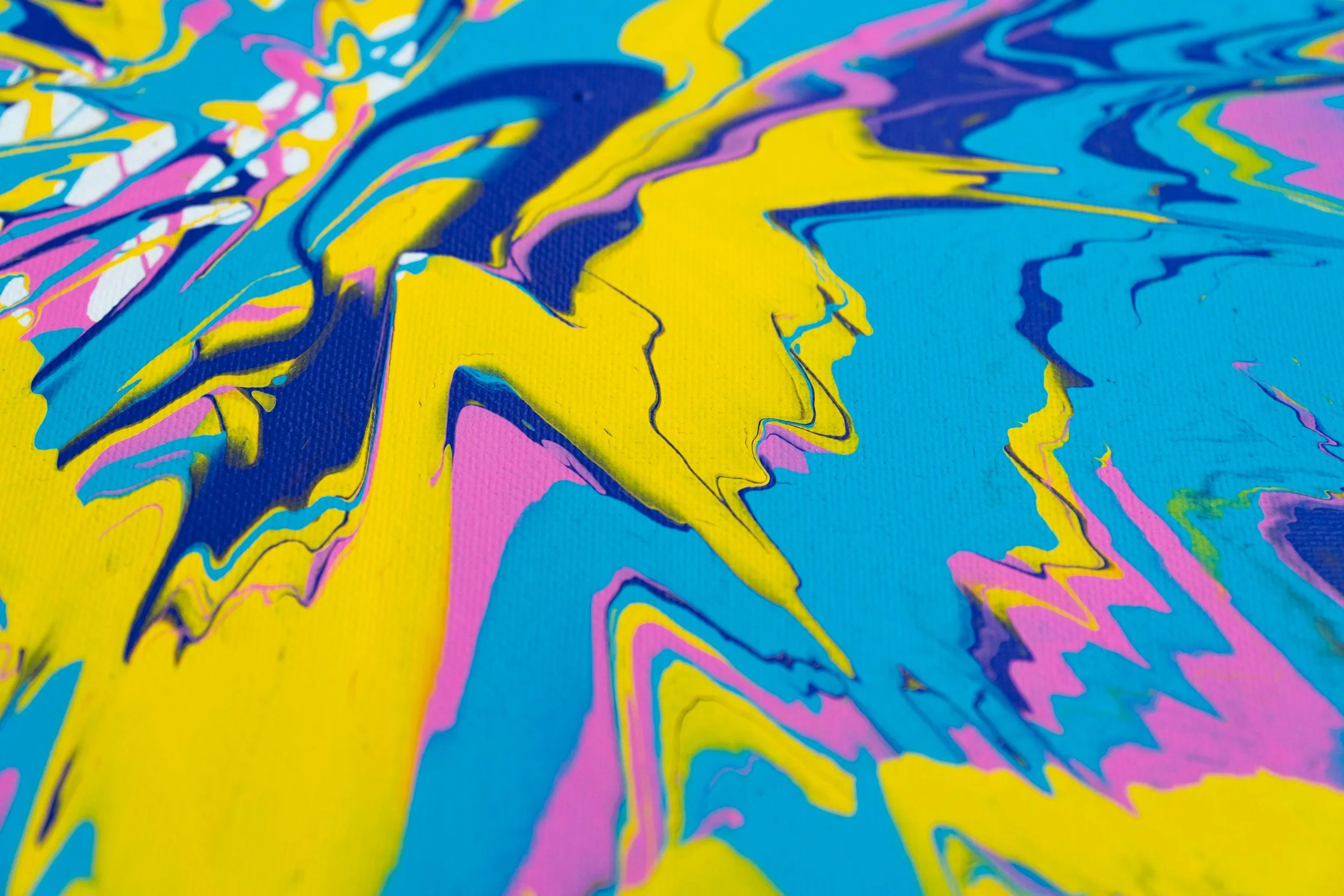Hit Reset: The Secret Productivity Hack Four AI Leaders Don't Want Their Teams to Know
Four separate conversations. Four of the most sophisticated AI users I know. Four private confessions of the same "embarrassing" habit.
An AI leader at a major biotech company. An AI-powered designer running a fashion startup. An AI-enhanced private equity investor. An AI-driven edtech CEO. All recognized leaders in their domains, all at the forefront of AI adoption. And all secretly doing something they're almost ashamed to admit.
They're napping.
Not just occasionally—regularly. Deliberately. And it's not because they're tired. It's because they've discovered something the productivity gurus won't tell you: in our hyper-connected, AI-augmented world, the most productive thing you can do is sometimes... nothing.
The Stigma is Real (And Ridiculous)
Here's where it gets interesting. One of these leaders told me they're resisting return-to-office mandates specifically because of the napping stigma. Another confessed they never admit to it—until they learned they could reframe it as "NSDR" (Non-Sleep Deep Rest). Suddenly, what sounded lazy became scientifically official.
Or they call it “Transcendental Meditation.” Jerry Seinfeld does TM. Ray Dalio swears by it. Nobody questions the value of a TM session. People respect "I need to follow my NSDR protocol" in a way they don't respect "I'm going to take a nap."
This leader told me they realized TM is basically NSDR, which is basically a nap—they just found socially acceptable ways to say it.
The stigma reveals something deeper: we're embarrassed by our biological needs. And that embarrassment is killing our effectiveness.
The Science of Strategic Disconnection
Matthew Walker, the Berkeley neuroscientist behind Why We Sleep, would say these AI leaders are onto something profound. According to Walker's research, humans are biphasic sleepers by evolutionary design—we're naturally inclined to sleep in two phases: one long overnight sleep and one shorter mid-afternoon rest.
That afternoon dip in alertness 7-9 hours after waking? It's not a defect. It's biologically programmed.
Walker's studies show naps can boost learning and memory, improve alertness and motor performance (NASA proved this with pilots), and enhance emotional regulation and creativity. In one study, participants who napped after learning retained far more information than those who stayed awake—sometimes performing as well as those who had a full night's sleep.
But here's what Walker discovered that connects to something even bigger: napping isn't just about sleep. It's about disconnection.
Research from Northwestern University's Carola Salvi reveals that "looking at nothing" facilitates retrieval of internal memory representations. Visual processing can actually impair the synthesis of connections. As Salvi puts it: "This 'looking at nothing' behavior... appears to indicate (and likely facilitate) a shift of attention from external to internal stimuli that benefits creativity and problem solving."
Translation: Sometimes you need to stop inputting to start connecting.
Four Ways to Hit Reset
This post marks my 200th edition of Methods of the Masters—a fitting bridge between my early focus on human creativity and my recent AI work. Because in an age of infinite AI inputs, we need equally intentional disconnection strategies.
1. Napping/NSDR/TM Call it whatever makes you comfortable, but give yourself permission for that biologically-wired afternoon reset. 20 minutes for alertness, 90 minutes for a full cognitive reboot including REM-powered creativity.
2. Hot Tubbing/Sauna I was completely stuck on one of the most important presentations of my career—a keynote to hundreds of CEOs where I'd agreed to speak without knowing what I'd say. The solution came to me in the hot tub. Not while listening to a podcast or reviewing notes, but in the disconnected space of just... soaking. (And you thought admitting you take an occasional nap might raise eyebrows?)
3. Cold Plunge The shock literally forces disconnection. Your brain can't process anything else—it's like mandatory mindfulness, a complete RAM clearing. When your nervous system is dealing with cold shock, there's no bandwidth for anything else.
4. Rucking Hiking with weight, but here's the key: no podcasts, no audiobooks, no inputs. Just you, the trail, and the space for your mind to synthesize everything you've been feeding it.
Advertising legend David Ogilvy understood this intuitively. He wrote: "I have developed techniques for keeping open the telephone line to my unconscious, in case that disorderly repository has anything to tell me. I hear a great deal of music... I take long hot baths. I garden. I go into retreat among the Amish. I watch birds. I go for long walks in the country. And I take frequent vacations, so that my brain can lie fallow -- no golf, no cocktail parties, no tennis, no bridge, no concentration; only a bicycle. While thus employed in doing nothing, I receive a constant stream of telegrams from my unconscious, and these become the raw material for my advertisements..."
What more could a modern professional hope for than a "constant stream of telegrams from my unconscious"???
The Productivity Paradox
Here's the central tension: ironically, the longing to feel "productive" keeps us from some of our most productive thinking strategies.
We're so obsessed with efficiency that we've forgotten the difference between efficient and effective. Effective problem-solving often looks inefficient. Frank Lloyd Wright napped twice daily. Einstein played violin when stuck on physics problems. These aren't character flaws—they're features.
David Ogilvy, in his classic Confessions of an Advertising Man, observed, "The majority of business men are incapable of original thinking because they are unable to escape from the tyranny of reason." That quote launched my very first blog post years ago, and it feels fitting to revisit it now in my 200th edition—because this is exactly what we're seeing with AI leaders who've discovered the power of strategic unreason. While most executives remain trapped in the tyranny of constant optimization, these leaders have learned to escape it through deliberate disconnection.
In our productivity-obsessed culture, we mistake constant motion for progress. But as I've written before (Look at Nothing and Embrace the Useless) sometimes the most innovative thing you can do is deliberately disconnect.
The More Connected, The More Disconnection Required
For as much as I've championed the "disciplined pursuit of input" and taught students of innovation around the world the virtues of seeking inspiration, I've come to believe equally in the power of disconnection—especially in our hyper-augmented world.
The more connected we become through AI, the more intentional we must be about disconnection. Not as commentary on screens or social media, but about our ability to process, understand, imagine, and cultivate our distinctly human capabilities.
We're processing more inputs than ever before—from AI conversations to information streams to augmented insights. Those four AI leaders understand something crucial: all that input needs processing time. Synthesis requires space.
Your Turn to Hit Reset
Here's my challenge for this week: Block time for one disconnection session. Not in the name of efficiency, but to turbocharge your effectiveness.
Pick one:
A 20-minute NSDR session (see? Sounds official, doesn’t it?)
A device-free soak or sauna
A cold plunge hard reset
A podcast-free walk or ruck
The key is decisive disconnection from input. No multitasking. No "productive" additions. Just you and the space to let your mind connect what it's been collecting.
Try it. Then hit reply and tell me what happened. What connections emerged? What insights surfaced? What reset when you finally stopped feeding your brain and started digesting?
Because in a world of endless AI augmentation, your most powerful tool might be the one that requires you to do absolutely nothing.
This is the 200th edition of Methods of the Masters—a milestone that perfectly bridges my original focus on human creativity with my recent exploration of AI augmentation. Sometimes the most innovative path forward requires looking back to what makes us fundamentally human.
Related: Escape the Tyranny of Reason
Related: Look at Nothing
Related: Embrace the Useless
Related: Divergent Diversions
Related: Practice Inspiration
Join over 24,147 creators & leaders who read Methods of the Masters each week



Most organizations don’t fail at AI because of the tech. They fail because leaders reward critique over curiosity. Here’s how to flip the script before your next breakthrough dies in the room.